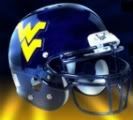Post by elp525 on May 8, 2011 8:58:42 GMT -5
May 7, 2011
By Mitch Vingle
The Charleston Gazette
FRIDAY WAS the last day of finals at West Virginia University. Some of the school's sports, like baseball, continue for another couple of weeks. For the most part, though, it's time to kiss the 2010-11 school year goodbye.
And take a quick peek ahead.
The topic here is WVU's Big East conference. The league had a very healthy basketball season. On the men's side, Connecticut won another national championship. On the women's side, the Huskies dipped a bit, but Notre Dame played in the title game. The future again looks bright in the sport.
In regard to men's hoops, the Big East had seven of the nation's Top 25 recruiting classes, according to Scout.com: St. John's (No. 3), Louisville (No. 6), Syracuse (No. 9), Rutgers (No. 10), WVU (No. 21), Georgetown (No. 22) and Villanova (No. 23).
In football, of course, the Big East had anything but a healthy season. Think Medicaid. No conference team finished in the major Top 25 rankings. There were zero wins against Top 25 opponents, and Connecticut was shellacked 48-20 by Oklahoma in the league's BCS bowl (that dirty Fiesta Bowl).
So don't expect the conference to have flowers thrown its way by the preseason mags this summer. West Virginia, despite losing seven defensive starters, will probably get the nod to win the league from most publications. The Mountaineers have the pedigree, are adding offensive guru Dana Holgorsen and are always a safe bet to at least contend.
Expect, though, some surprises within the league. And expect what many would consider surprising: success outside the league.
No, the talent level won't rival that of, say, the SEC. But there are a few dynamics in place many won't take into consideration when looking ahead.
At Connecticut, for example, coach Randy Edsall is gone, but Paul Pasqualoni is taking over. Pasqualoni doesn't have a great presence in front of cameras, but he certainly knows football. After a successful stint at Syracuse, he was the defensive coordinator of the Dallas Cowboys.
Syracuse, meanwhile, is starting to show life under Doug Marrone. Ditto Louisville under Charlie Strong. Skip Holtz and South Florida seem to be a nice fit.
But I defer to WVU coach Bill Stewart to explain the No. 1 reason for optimism within Big East football next season.
"There are quarterbacks coming back," he said.
Many, in fact. Any coach worth his salt will tell you quarterback is the first position one examines when trying to judge a team. Without talent and experience there, back up your expectations a step.
The Big East lost many offensive standouts, like first-round NFL draft pick Jon Baldwin, formerly of Pitt. Six of the league's top eight rushers, in fact, have departed. Only Cincinnati's Isaiah Pead and Pitt's Ray Graham return.
But the conference's top six quarterbacks return, if you go by passing average per game. They are, in order of last season's passing average:
1. Cincinnati's Zach Collaros - The Bearcats were disappointing last season, but that wasn't the case for Collaros, who took over for Tony Pike, now with the Carolina Panthers. Collaros led the Big East in passing yardage (2,902) and touchdown passes (26). UC had the league's No. 1 passing, scoring and total offense. Backup Chazz Anderson was so frustrated he announced this week he was transferring to a Division II school.
2. WVU's Geno Smith - Smith has had health problems (foot), but when he's healthy, he's effective. His 2,763 passing yards and 2,980 total yards were school records for a Mountaineer sophomore. He finished last season No. 1 in the Big East in pass efficiency (144.7) and was No. 2 in total offense (229.2 average) and passing yards per game (212.5). Backups like Barry Brunetti (who will compete to start next season at Ole Miss) and Jeremy Johnson left town because of Smith's talent. Holgorsen's Air Raid offense seems a fit for the WVU QB.
3. Pitt's Tino Sunseri - Sunseri, son of Carolina Panthers defensive line coach Sal, was a pleasant surprise for Pittsburgh as a starter last season. A sophomore like Smith, Sunseri completed 64.5 percent of his passes (to Smith's 64.8) for 2,572 yards and 16 touchdowns with nine picks. Like Smith, he should benefit from an offensive change. Sunseri will be moved from under center to the shotgun for new Pitt coach Todd Graham. Sunseri completed 35-of-55 passes for 416 yards in Pitt's spring game.
4. Syracuse's Ryan Nassib - One shouldn't expect fireworks from Nassib, but one should expect effectiveness. He'll be a senior in the upcoming season and will have six other starters, including his offensive line and standout receiver Van Chew, back. Nassib averaged 179.5 passing yards and completed 56.4 percent of his passes. He led the Orange to a Pinstripe Bowl win over Kansas State. In SU's spring game, he threw for 227 yards.
5. Rutgers' Chas Dodd - When Tom Savage, a high school All-America quarterback, signed with Rutgers, it was hailed as one of the most important days in school football history. Now, he's gone - chased away by Chas. As a freshman, Dodd threw for 1,637 yards, completing 55.2 percent of his passes. Now he'll be in a pro-style offense put in place by new Rutgers offensive coordinator Frank Cignetti. At the Scarlet-White spring game, Dodd went 27-for-35 for 289 yards and two touchdowns.
6. South Florida's B.J. Daniels - Watching Daniels is like watching dice in a craps game. You could win big. You could roll a seven. Daniels is back, though, and he'll be a junior after throwing for 1,685 yards last season. In the spring game, he completed 8-of-19 passes for 121 yards. He's competing for the job against Bobby Eveld and Matt Floyd.
The group certainly won't lift the Big East to SEC-like status, and it won't be the cure for all the conference's ills. But it should improve the league's health for 2011-12.
By Mitch Vingle
The Charleston Gazette
FRIDAY WAS the last day of finals at West Virginia University. Some of the school's sports, like baseball, continue for another couple of weeks. For the most part, though, it's time to kiss the 2010-11 school year goodbye.
And take a quick peek ahead.
The topic here is WVU's Big East conference. The league had a very healthy basketball season. On the men's side, Connecticut won another national championship. On the women's side, the Huskies dipped a bit, but Notre Dame played in the title game. The future again looks bright in the sport.
In regard to men's hoops, the Big East had seven of the nation's Top 25 recruiting classes, according to Scout.com: St. John's (No. 3), Louisville (No. 6), Syracuse (No. 9), Rutgers (No. 10), WVU (No. 21), Georgetown (No. 22) and Villanova (No. 23).
In football, of course, the Big East had anything but a healthy season. Think Medicaid. No conference team finished in the major Top 25 rankings. There were zero wins against Top 25 opponents, and Connecticut was shellacked 48-20 by Oklahoma in the league's BCS bowl (that dirty Fiesta Bowl).
So don't expect the conference to have flowers thrown its way by the preseason mags this summer. West Virginia, despite losing seven defensive starters, will probably get the nod to win the league from most publications. The Mountaineers have the pedigree, are adding offensive guru Dana Holgorsen and are always a safe bet to at least contend.
Expect, though, some surprises within the league. And expect what many would consider surprising: success outside the league.
No, the talent level won't rival that of, say, the SEC. But there are a few dynamics in place many won't take into consideration when looking ahead.
At Connecticut, for example, coach Randy Edsall is gone, but Paul Pasqualoni is taking over. Pasqualoni doesn't have a great presence in front of cameras, but he certainly knows football. After a successful stint at Syracuse, he was the defensive coordinator of the Dallas Cowboys.
Syracuse, meanwhile, is starting to show life under Doug Marrone. Ditto Louisville under Charlie Strong. Skip Holtz and South Florida seem to be a nice fit.
But I defer to WVU coach Bill Stewart to explain the No. 1 reason for optimism within Big East football next season.
"There are quarterbacks coming back," he said.
Many, in fact. Any coach worth his salt will tell you quarterback is the first position one examines when trying to judge a team. Without talent and experience there, back up your expectations a step.
The Big East lost many offensive standouts, like first-round NFL draft pick Jon Baldwin, formerly of Pitt. Six of the league's top eight rushers, in fact, have departed. Only Cincinnati's Isaiah Pead and Pitt's Ray Graham return.
But the conference's top six quarterbacks return, if you go by passing average per game. They are, in order of last season's passing average:
1. Cincinnati's Zach Collaros - The Bearcats were disappointing last season, but that wasn't the case for Collaros, who took over for Tony Pike, now with the Carolina Panthers. Collaros led the Big East in passing yardage (2,902) and touchdown passes (26). UC had the league's No. 1 passing, scoring and total offense. Backup Chazz Anderson was so frustrated he announced this week he was transferring to a Division II school.
2. WVU's Geno Smith - Smith has had health problems (foot), but when he's healthy, he's effective. His 2,763 passing yards and 2,980 total yards were school records for a Mountaineer sophomore. He finished last season No. 1 in the Big East in pass efficiency (144.7) and was No. 2 in total offense (229.2 average) and passing yards per game (212.5). Backups like Barry Brunetti (who will compete to start next season at Ole Miss) and Jeremy Johnson left town because of Smith's talent. Holgorsen's Air Raid offense seems a fit for the WVU QB.
3. Pitt's Tino Sunseri - Sunseri, son of Carolina Panthers defensive line coach Sal, was a pleasant surprise for Pittsburgh as a starter last season. A sophomore like Smith, Sunseri completed 64.5 percent of his passes (to Smith's 64.8) for 2,572 yards and 16 touchdowns with nine picks. Like Smith, he should benefit from an offensive change. Sunseri will be moved from under center to the shotgun for new Pitt coach Todd Graham. Sunseri completed 35-of-55 passes for 416 yards in Pitt's spring game.
4. Syracuse's Ryan Nassib - One shouldn't expect fireworks from Nassib, but one should expect effectiveness. He'll be a senior in the upcoming season and will have six other starters, including his offensive line and standout receiver Van Chew, back. Nassib averaged 179.5 passing yards and completed 56.4 percent of his passes. He led the Orange to a Pinstripe Bowl win over Kansas State. In SU's spring game, he threw for 227 yards.
5. Rutgers' Chas Dodd - When Tom Savage, a high school All-America quarterback, signed with Rutgers, it was hailed as one of the most important days in school football history. Now, he's gone - chased away by Chas. As a freshman, Dodd threw for 1,637 yards, completing 55.2 percent of his passes. Now he'll be in a pro-style offense put in place by new Rutgers offensive coordinator Frank Cignetti. At the Scarlet-White spring game, Dodd went 27-for-35 for 289 yards and two touchdowns.
6. South Florida's B.J. Daniels - Watching Daniels is like watching dice in a craps game. You could win big. You could roll a seven. Daniels is back, though, and he'll be a junior after throwing for 1,685 yards last season. In the spring game, he completed 8-of-19 passes for 121 yards. He's competing for the job against Bobby Eveld and Matt Floyd.
The group certainly won't lift the Big East to SEC-like status, and it won't be the cure for all the conference's ills. But it should improve the league's health for 2011-12.





